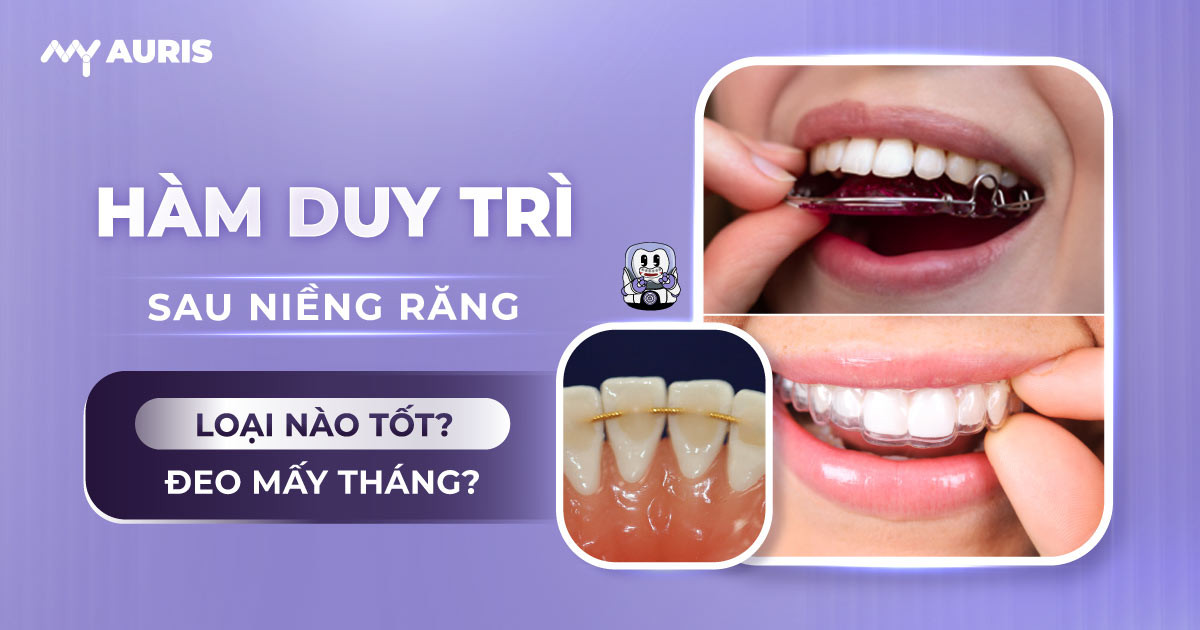Retainers are a type of dental appliance prescribed by dentists for use after orthodontic braces are removed. Their main function is to stabilize tooth positions, prevent shifting, and keep teeth from returning to their original positions. Depending on each person’s dental condition, the dentist will recommend the appropriate type of retainer to maintain the results of orthodontic treatment.
Why is it necessary to wear retainers after braces?
After the orthodontic treatment phase ends, teeth and jawbones are not yet fully stable. Due to the orthodontic forces, the ligaments around the teeth tend to pull the teeth back to their original positions, affecting the outcome of the treatment. Therefore, using a retainer is essential to maintain stable tooth positions.
In addition, gum tissue and periodontal tissue still need time to reorganize the tooth structure after the braces are removed. Wearing this dental appliance helps ensure that teeth remain in their new positions, prevents tooth shifting, and preserves the long-term results of orthodontic treatment.
3 Popular Types of Retainers After Braces
After braces, using a retainer is a crucial step to ensure teeth do not shift back. Currently, there are 3 popular types of retainers, each with its own advantages and disadvantages, suitable for different user needs.
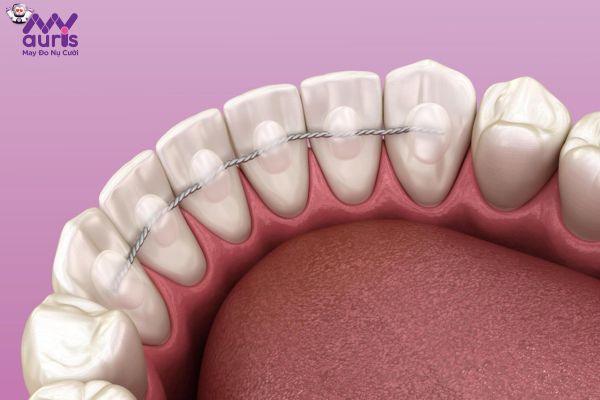
Fixed Retainers
Fixed retainers are made of stainless steel, shaped like an archwire, and permanently bonded to the inner surface of the teeth with dental adhesive. This type of retainer securely holds the teeth, preventing shifting during use.
Advantages:
High aesthetics: Because they are bonded to the inner surface of the teeth, fixed retainers are not visible, allowing you to confidently communicate.
Stable effectiveness: Durable metal material and stable forces help keep teeth securely in place.
Shorter wearing time: Since they are permanently bonded 24/7, the wearing time for fixed retainers can be shorter compared to other types.
Disadvantages:
Complex oral hygiene: Cleaning teeth and retainers requires careful attention to remove any trapped food debris.
Initial bulkiness: When first worn, you may feel uncomfortable, but this sensation will disappear after 5-7 days.
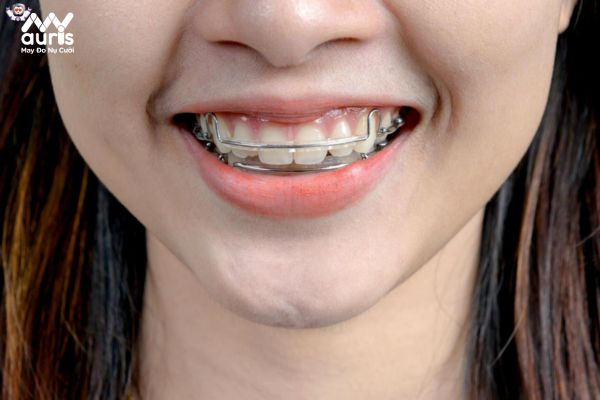
Removable Metal Retainers
Removable metal retainers are also made of stainless steel, but feature a convenient removable design. This type of retainer is usually fitted between the canine and first premolar (teeth #3 and #4) to stabilize teeth and prevent shifting.
Advantages:
High effectiveness: The metal material ensures stable force, preventing teeth from moving.
Convenient for daily life: You can easily remove it when eating or playing sports.
Disadvantages:
Low aesthetics: The design is quite bulky, so it is usually only recommended for overnight wear.
Limited wearing time: Due to its lower aesthetics, the daily wearing time is often short, leading to a risk of teeth shifting.
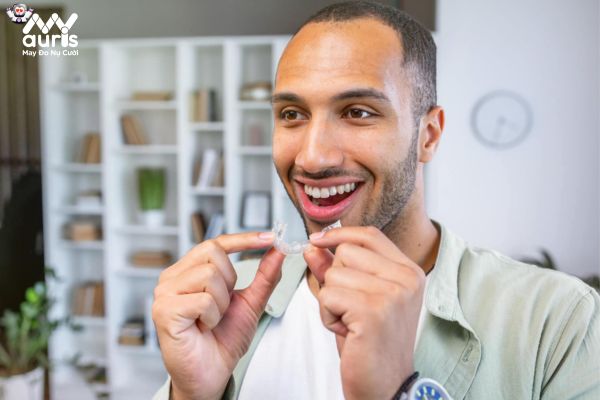
Removable Plastic Retainers
Removable plastic retainers are the most popular type today due to their transparent, safe, and user-friendly plastic material. This type of retainer is custom-designed based on each individual’s dental impressions, ensuring a snug fit and effective tooth stabilization.
Advantages:
Superior aesthetics: The transparent plastic makes the retainer almost invisible, suitable for those who frequently interact with others.
Easy to clean: You can remove it when eating, making oral hygiene simpler.
Disadvantages:
Easy to forget to re-wear: Due to its convenience, many people often forget to put it back on after removing it, affecting the effectiveness of tooth retention.
How Long Do You Need to Wear Retainers?
The duration of retainer wear depends on each patient, their gum and tooth condition, and the maturity level of their jawbone system. The dentist will prescribe wearing them until the tooth positions are completely stable. For children, retainers are worn until adulthood (around 20 years old) to ensure gum and tooth stability and natural jawbone development. For adults, the recovery period is longer, typically requiring wear for 6 to 12 months after braces. In cases of weak teeth, patients may need to wear retainers for life to maintain treatment effectiveness.
How Much Do Retainers Cost? Latest Update 2025
After orthodontic treatment, using a retainer is essential to keep teeth stable and prevent shifting. However, the price of retainers will vary depending on the type of appliance and the pricing of each dental clinic.
Currently, the cost of orthodontic treatment includes the retention phase, and the average market prices for popular retainer types are as follows:
Fixed retainer: 700,000 – 900,000 VND
Transparent (clear) retainer: 1,000,000 – 1,500,000 VND
Removable metal retainer: Over 2,000,000 VND
Note: These are market reference prices, not the official price list of My Auris Dental Clinic. For accurate dental service costs, please contact the dental clinic hotline: 0906038017 for detailed dental consultation.

Important Notes When Wearing Retainers After Braces
After orthodontic treatment, wearing a retainer, also known as a retention appliance, plays a crucial role in keeping teeth stable in their new positions. Similar to when you had braces, you need to pay special attention to the following points to maximize the effectiveness of your retainer and protect your oral health:
For removable retainers: In the initial phase, wear your retainer continuously as instructed by your dentist, avoiding removing it and then forgetting to put it back on. This is crucial to prevent teeth from shifting.
Retainer and oral hygiene: Clean your teeth and mouth regularly and thoroughly, including cleaning your removable retainer (if applicable) after every meal. This helps prevent oral diseases such as cavities and gingivitis. Use a soft-bristled toothbrush and appropriate toothpaste to gently clean your retainer.
When eating and exercising: Removable retainers need to be removed when eating food and when participating in water sports. While wearing your retainer, you should limit eating hard and chewy foods, as they can put pressure on your teeth and cause them to move.
Regular check-ups: Attending regular check-up appointments with your dentist is extremely important. Post-braces check-ups help the dentist monitor the condition of your retainer and oral health, detect and address any issues promptly, thereby maintaining long-term orthodontic results. Listen to and follow your dentist’s instructions for the best post-braces oral care. These are essential tips for using retainers to ensure good oral health.

How to Properly Clean Your Retainer After Braces
After orthodontic treatment, proper care and cleaning of your retainer play a crucial role in protecting the results of your treatment. If not cleaned correctly, bacteria and food debris can accumulate, affecting your oral health. Here is a detailed guide to help you effectively clean your retention appliance.
How to properly clean your retainer
Step 1: Prepare warm water, a soft-bristled toothbrush, cotton swabs, and a specialized soaking solution to clean the retention appliance.
Step 2: Rinse the retainer with warm water, then use a soft-bristled toothbrush with toothpaste to clean its surface.
Step 3: Use a cotton swab dipped in clean water to remove any food debris stuck in the small crevices of the appliance.
Step 4: Place the retainer in a specialized soaking solution for about 5-10 minutes to eliminate bacteria and stubborn plaque.
Step 5: After soaking, dry the retainer, let it air dry, then store it in a clean case to prevent dust and bacteria from entering.
For fixed retainers, you need to visit the dental clinic for your dentist to clean them properly and ensure their correct position. Additionally, you can use a water flosser or modern dental hygiene tools to remove food debris after eating, helping to maintain effective oral hygiene.
FAQs About Retainers After Braces
After a challenging orthodontic treatment process, the use of retention appliances often causes many people concern. At My Auris Dental Clinic, we understand these concerns. This article will provide detailed answers to the most common questions about retainers, helping you feel more at ease on your journey to maintaining a perfect smile.
Why do teeth still shift even with a retainer?
Some people experience tooth shifting even after using a retainer post-braces. The reasons could be an unsuitable retainer design or size. Furthermore, improper retainer wear, especially with removable retainers, can lead to unwanted tooth movement. To ensure effectiveness, you must follow your dentist’s instructions and wear your retainer consistently.
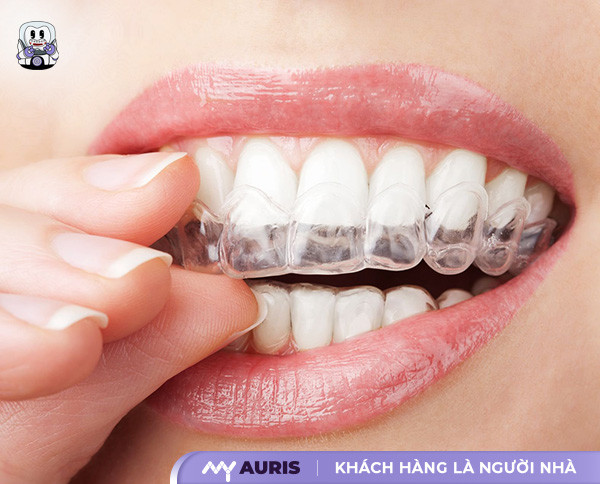
How long should retainers be worn? Is lifelong wear necessary?
Not everyone needs to wear retainers for life. The duration of retainer wear depends on an individual’s constitution and tooth structure. For those with strong jawbones, the retention appliance is usually worn for 6-12 months. However, if the teeth are not yet stable or the jawbone is weak, the dentist may require longer wear to prevent tooth shifting.
Can I eat normally with a retainer?
Wearing a retainer does not significantly affect eating; you can still eat normally and feel more comfortable than with braces. However, during this phase, it is advisable to limit hard and chewy foods, as the jawbone is still weak and tooth roots are not fully stable. Choosing soft foods will help protect your teeth and maintain the effectiveness of your orthodontic treatment.
How long until teeth shift if I don’t wear my retainer?
If you forget to wear your retainer for 1 day, your teeth will not immediately shift. However, if this situation persists, combined with regular eating, the risk of tooth shifting is very high. Especially in the initial period after braces, maintaining consistent retainer wear is extremely important to ensure tooth stability and avoid unwanted consequences. Therefore, follow your dentist’s instructions and avoid leaving your retainer off for too long to protect your long-term orthodontic results.
Does wearing a retainer cause pain?
Many people worry about the sensation of wearing a retainer, but in reality, this orthodontic appliance typically causes little to no pain or discomfort, unlike braces. On the contrary, you may feel much more comfortable, especially when using removable or clear retainers, as they are designed to be lightweight and fit snugly around your teeth, minimizing pressure.
Maintaining proper retainer wearing habits plays a crucial role in protecting the effectiveness of orthodontic treatment, helping teeth stabilize and maintaining long-term results. If you have any further questions about types of retainers, please contact My Auris Dental Clinic immediately via hotline 0906038017 for professional advice on braces from our experienced dental team. A beautiful, straight smile not only enhances aesthetics but also contributes to overall oral health!


